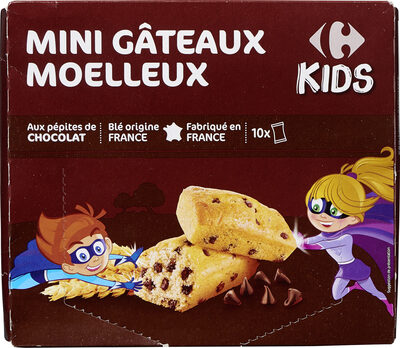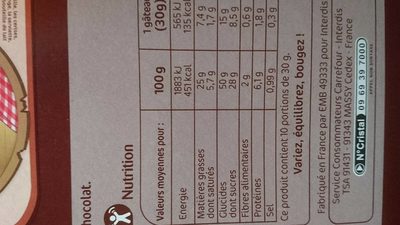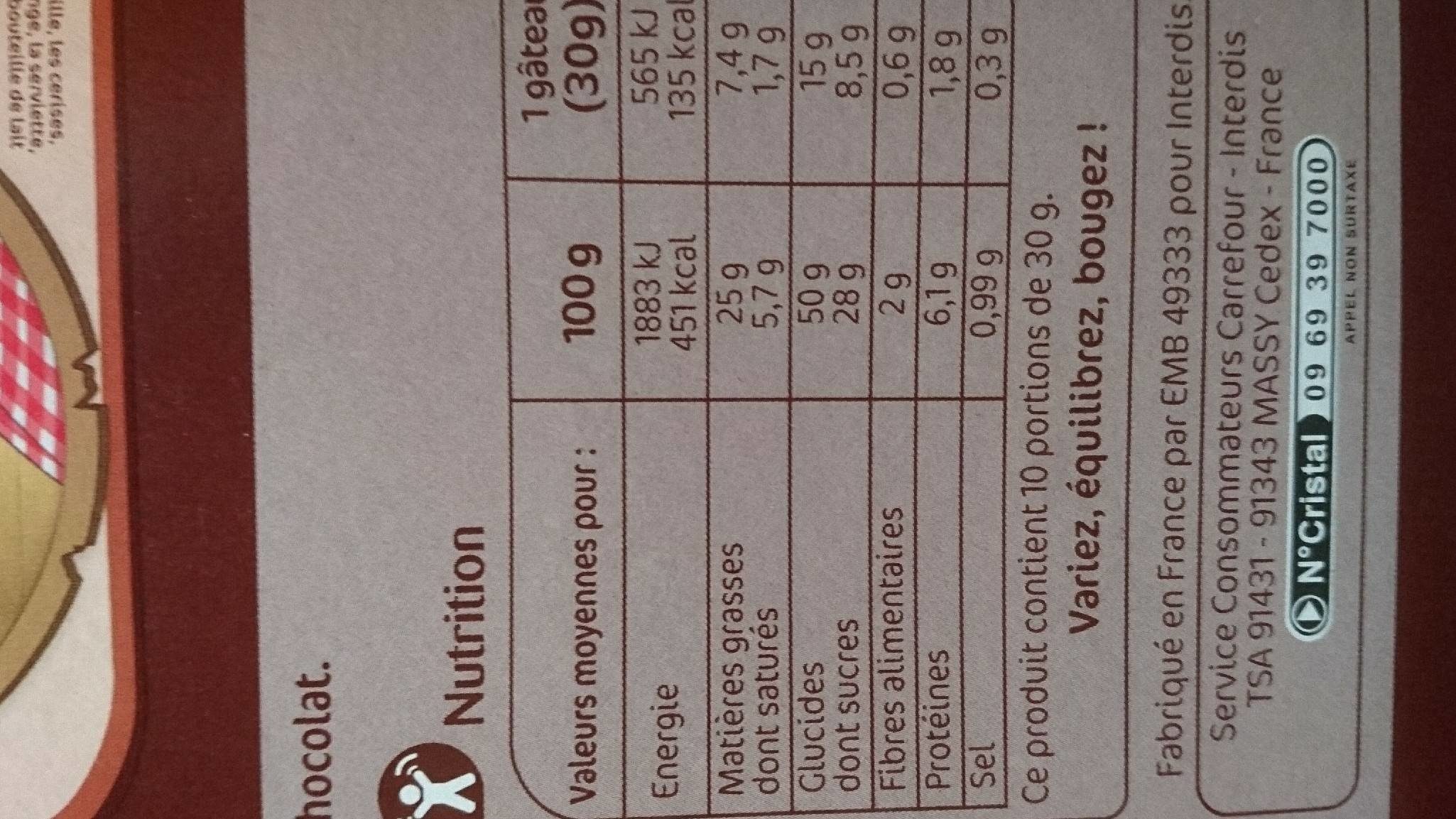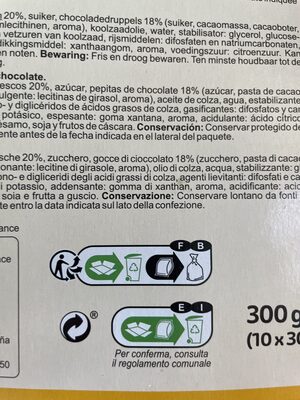MINI CAKE Aux pépites de chocolat - Carrefour - 300 g
Aquesta pàgina del producte no està completa. Podeu ajudar a completar-la editant-la i afegint-hi més dades a partir de les fotos ja disponibles, o fent-ne més amb l'aplicació de androide o iPhone / iPad. Gràcies!
×
Algunes de les dades d’aquest producte les ha proporcionat directament el fabricant Carrefour.
Codi de barres: 3560071083076 (EAN / EAN-13)
Nom comú: 10 petits gâteaux aux pépites de chocolat.
Quantitat: 300 g
Marques: Carrefour
Categories: Snacks, Aperitius dolços, Galetes i pastissos, Pastís
Etiquetes, certificacions, premis:
Punt verd, Fet a França
Codi de traçabilitat: EMB 49333 - Seiches-sur-le-Loir (Maine-et-Loire, France)
Botigues: Carrefour, carrefour.fr
Matching with your preferences
Altres dades
Condicions de conservació: À conserver à l'abri de la chaleur et de l'humidité. Pour une dégustation optimale, à consommer de préférence avant la date indiquée sur le côté du paquet.
Servei al client: Interdis - TSA 91431 - 91343 MASSY Cedex - France
Report a problem
Fonts de dades
Producte afegit per kiliweb
Última modificació de la pàgina del producte per spotter.
La pàgina del producte, també editada per abracalibaba, autorotate-bot, dieteticienne, driveoff, ecoscore-impact-estimator, inf, openfoodfacts-contributors, org-carrefour, papillon974, roboto-app, teolemon, yuka.B61jENmMPcMQEcTw7LwV5CDlD83lDsd7FlsWog, yuka.YklZOVA1MVovTjVWbGRvRHppekh3dE5weFk2UFpUenBEZEVTSVE9PQ, yuka.sY2b0xO6T85zoF3NwEKvlkV-eMb3gR_ubhXtq3_b5POrEp7Nc-tSxZjxKKs.












